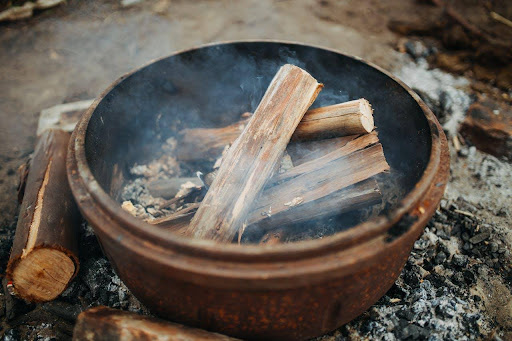Metal fire rings offer the perfect combination of portability and durability for creating a warmth and ambient cozy atmosphere. However, wind can quickly turn your peaceful evening into a frustrating battle against scattered embers and a struggling flame.
Wind doesn’t just make your fire harder to maintain. It creates real safety hazards and wastes your fuel. However, with a few smart adjustments, you can enjoy your fire ring even when the breeze picks up.
Positioning is Essential
Location makes all the difference when setting up your fire ring. Look for naturally sheltered spots in your yard where existing structures can block wind flow.
Areas near fences, walls, or the side of your house provide built-in wind protection. Just make sure you maintain safe distances from any combustible materials. A good rule is keeping at least 10 feet between your fire ring and structures.
Avoid open areas where wind can hit your fire from multiple directions. Low-lying spots often have less wind exposure than elevated areas of your yard.
Shielding Strategies That Work
Creating physical barriers around your fire ring dramatically reduces wind interference. You don’t need expensive installations to achieve effective wind protection.
- Dense shrubs or bushes planted strategically can serve as natural windbreaks
- Temporary screens made from outdoor fabric or tarps provide instant protection
- Portable panels designed for camping work well for occasional use
- Rock walls or decorative stone barriers offer permanent, attractive solutions
Position these barriers on the windward side of your fire ring. You want to deflect the wind up and over your fire area rather than completely blocking airflow, which your fire needs to burn properly.
Weight Matters for Stability
Heavier fire rings naturally resist wind movement better than lightweight models. If you’re shopping for metal fire rings, consider the thickness of the metal and overall construction weight.
For existing lightweight rings, you can add stability without replacing the entire unit. Place decorative rocks or stones around the base perimeter. These add visual appeal while anchoring your ring against wind movement.
Some people fill the bottom of their fire ring with a layer of sand before adding wood. This extra weight helps keep the ring grounded while also improving heat retention and ember containment.
The Lid Logic for Wind Control
Adding a lid or screen to your fire ring serves multiple wind-related purposes. It contains embers that would otherwise blow around your yard while still allowing proper airflow for combustion.
- Mesh screens let you see the flames while blocking flying sparks
- Hinged lids allow easy access for adding wood
- Weighted covers stay in place during gusty conditions
- Adjustable screens let you control airflow based on wind intensity
Look for lids with handles that stay cool during use. You’ll want to adjust the cover as wind conditions change throughout your fire session.
Fuel Selection for Windy Conditions
The type of wood you burn affects how well your fire handles wind. Hardwoods like oak and maple burn more steadily than softwoods in windy conditions. They create longer-lasting coals that resist being blown around.
Avoid using paper or lightweight kindling when it’s windy. These materials get caught in air currents and can blow out of your fire ring before they’re fully consumed. Stick with smaller pieces of solid wood for building your fire in breezy conditions.




